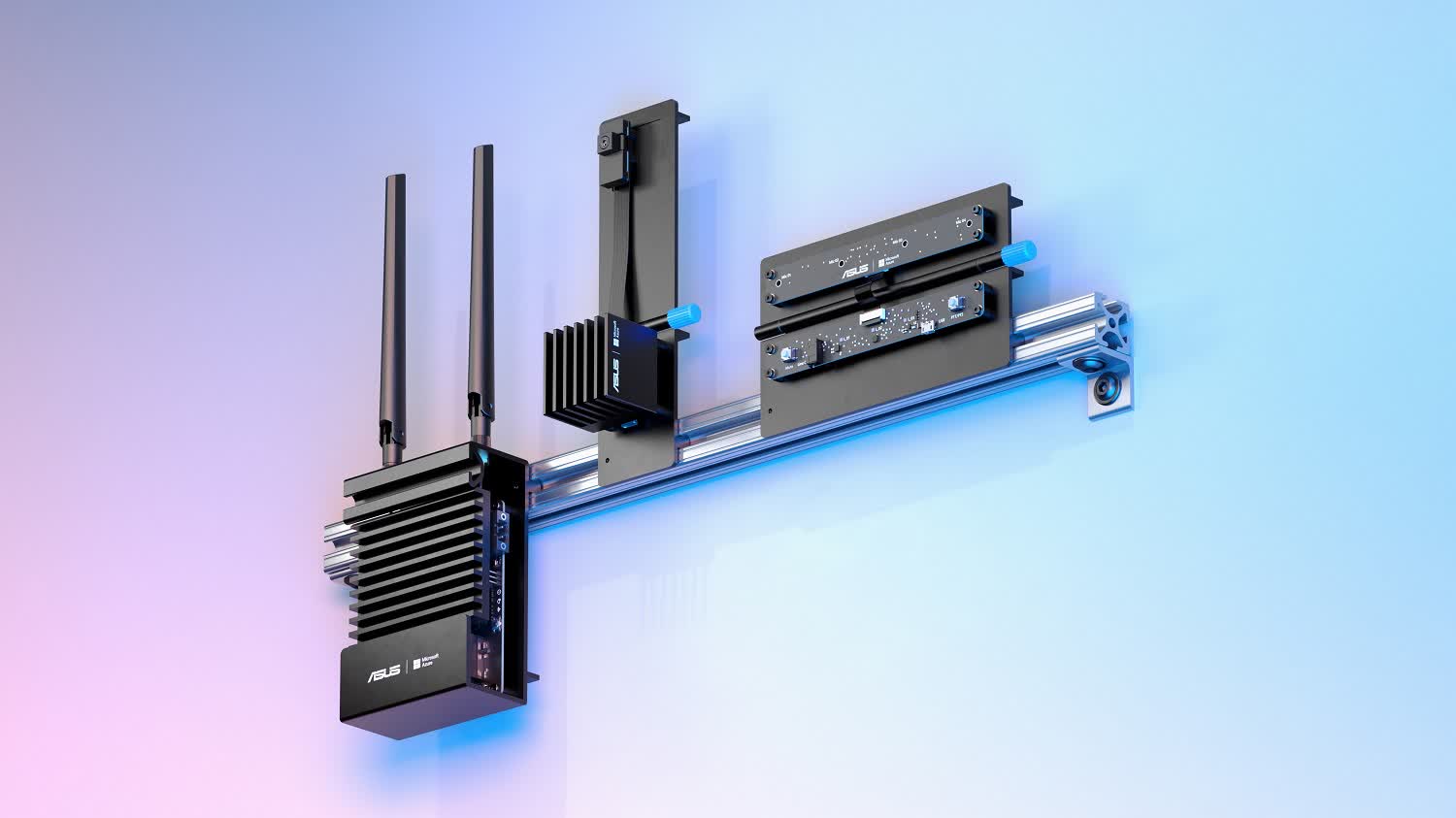The big picture: If ever there was a technology that failed to live up to its initial hype, the Internet of Things (IoT) would have to be it. After more than a decade of unfulfilled pledges that promised how companies, cities and institutions were going to connect office lighting systems, 30-year-old manufacturing equipment, parking spaces and, well, everything to the Internet, there's not much to show for the collective efforts.
If there's a real chance of changing the current state of IoT, Microsoft debuted an impressive host of IoT-related technologies at this year's Ignite conference that show what's the path forward, including a family of Arm-powered intelligent sensor appliances. In addition, the company announced the general availability a number of critical, but previously overlooked capabilities that arguably forced them to move a few steps backward before they could move everything forward.
But I'm getting ahead of myself.
From the start, the concepts behind IoT and the tasks required to make it useful were... ambitious. The steps involved in getting sensors attached to all these things – or tapping into existing sensors they had – networking them all, collecting reams of data, and then figuring out what it all meant were hard-really hard. The fact that it often involved trying to get different parts of an organization that typically don't care for each other-namely the IT folks and the OT (operational technology) people to work together just added insult to injury.
One of the biggest challenges is that the vast majority of organizations frankly weren't-and still aren't-even to the point where it makes sense to do an IoT project
One of the biggest challenges, however, is that the vast majority of organizations frankly weren't-and still aren't-even to the point where it makes sense to do an IoT project, let alone one that would result in a complete transformation of their company (as many were falsely promised). Logically, for example, an organization would need to know exactly what it had on its various networks before it embarked on an effort to extricate meaningful data from these various devices.
Turns out, because companies, municipalities and others interested in IoT are typically older organizations with lots of older equipment, even that essential requirement wasn't as easy to meet as one would think. In recognition of that, Microsoft announced Azure Defender for IoT last year, leveraging the unique capabilities of a technology they acquired from a company called CyberX that could automatically discover even older devices using what they call "agentless" technology.
What that means is even older "brown field" devices lacking modern software agents that can report their capabilities back to a software monitoring system and instead rely on specialized industrial protocols for communication can still be found and their capabilities tracked.
Taken together, all these new devices and services provide the critical look backwards necessary to let mainstream organizations even consider starting a major IoT effort.
Even more importantly, like its desktop counterpart, Azure Defender can automatically apply security patches and look for misconfiguration errors, both of which have proven to be enormous (and costly) security holes for IoT-related projects.
A few tweaks for this year are that Microsoft is adding new capabilities for finding devices that are on nested hub edge networks, such as those using a standard called ISA-95, that are typically "invisible" to most network-based management tools. The company also discussed a new dedicated piece of hardware called Azure Defender for IoT Sensor that connects to and lets companies monitor these older, unmanaged devices. Taken together, all these new devices and services provide the critical look backwards necessary to let mainstream organizations even consider starting a major IoT effort. While some may view them as overly simple, Microsoft discovered there are a lot of very basic steps that have to be taken for most organizations to even get to the starting line.

Beyond connecting and securing all the devices, another key aspect of IoT is building meaningful intelligence from all the data that a network of connected devices can generate. Once again, being able to do this proved much harder for most organizations than many realized. To address that need, Microsoft debuted Azure Percept, a set of AI accelerated edge computing devices and accompanying software platform at this year's Ignite. Azure Percept consists of a set of appliance-like devices with pre-built, computer vision and audio-based machine learning models and a simple development platform called Azure Percept Studio.
One of several major low-code, no-code-based tools debuted by Microsoft at this event (including the Excel formula language inspired PowerFX and the integration of the PowerAutomate automation/macro tool directly into Windows 10), Azure Percept Studio lets citizen developers created advanced, machine learning models that use either the camera sensor data from the Azure Percept Vision module or the audio data from the Azure Percept Audio module (or both) without needing to write a single line of code.
Because the models that Percept Studio generates are containerized, cloud-native bits of code, they can be easily ported to multiple architectures, further developed in more advanced programming tools, and moved across multiple different cloud or edge-based computing environments. In addition, the Percept platform allows end users access to the even more sophisticated Azure AI Cognitive Services and a suite of Azure AI Machine Learning models.
This first generation of three Percept hardware components are all built by Asus, but Microsoft is expecting to have other hardware partners for the Percept platform later this year. The initial devices include a Development Platform Kit that's built on an Arm-based NXP iMX8mq SoC with CPU, WiFi, Bluetooth and Ethernet support as well as a TPM 2.0 module to enable hardware root of trust.
In addition, there is Percept Vision, which is built around an Intel Movidius computer vision processor, and Percept Audio, which includes a far field array of four microphones, support for a custom keyword and hardware-accelerated AI processing as well. A package of the development kit module and Percept Vision sensor will be priced at $349 and the Percept Audio sensor will be a $79 accessory. All three devices feature an industrial design that leverages the 80/20 profile standard for aluminum tubing, making it very easy to mount or build the different pieces into unique devices, including robots.
While the Percept platform is intriguing on its own, once again, it exemplifies how Microsoft is applying its learnings around the many base-level challenges that are keeping most mainstream companies from even considering an IoT project and addressing them head on.
At a high level, it also seems to be part of a newfound focus on practicality and usefulness that Microsoft is displaying at this year's Ignite. Several of the announcements the company is making-including things like Universal Print support being integrated into Windows and Microsoft 365-arguably aren't very exciting. But, like some of the new IoT and intelligent edge efforts, they are very useful to many people.
Plus, they show the company really thinking through very simple, but often overlooked barriers that have kept many organizations from wider adoption of some of these technologies. I hope it's the start of a bigger era where even basic technology needs aren't taken for granted and digital helping hands are extended out to all the people and organizations that still need them.
Bob O'Donnell is the founder and chief analyst of TECHnalysis Research, LLC a technology consulting firm that provides strategic consulting and market research services to the technology industry and professional financial community. You can follow him on Twitter @bobodtech.
